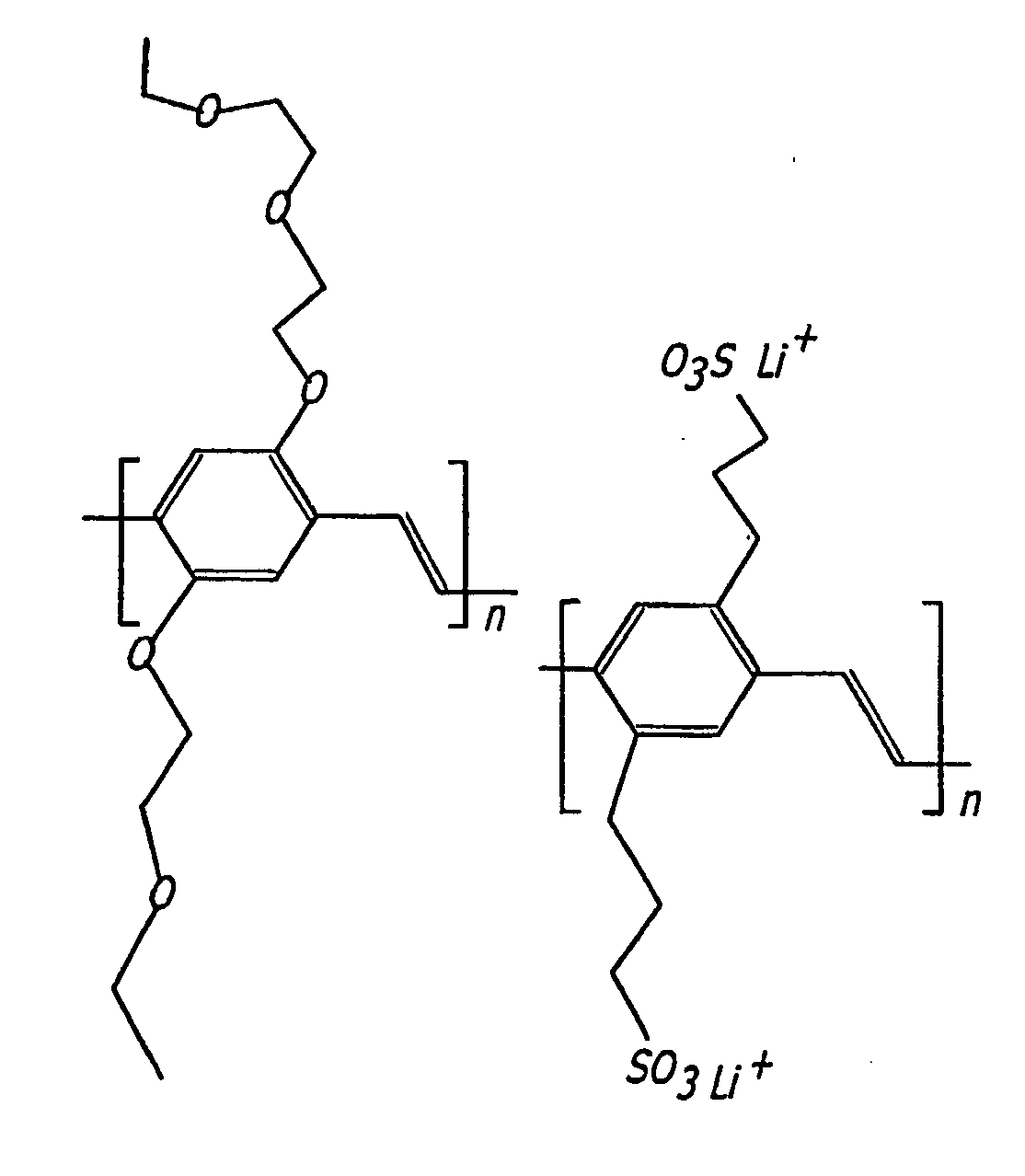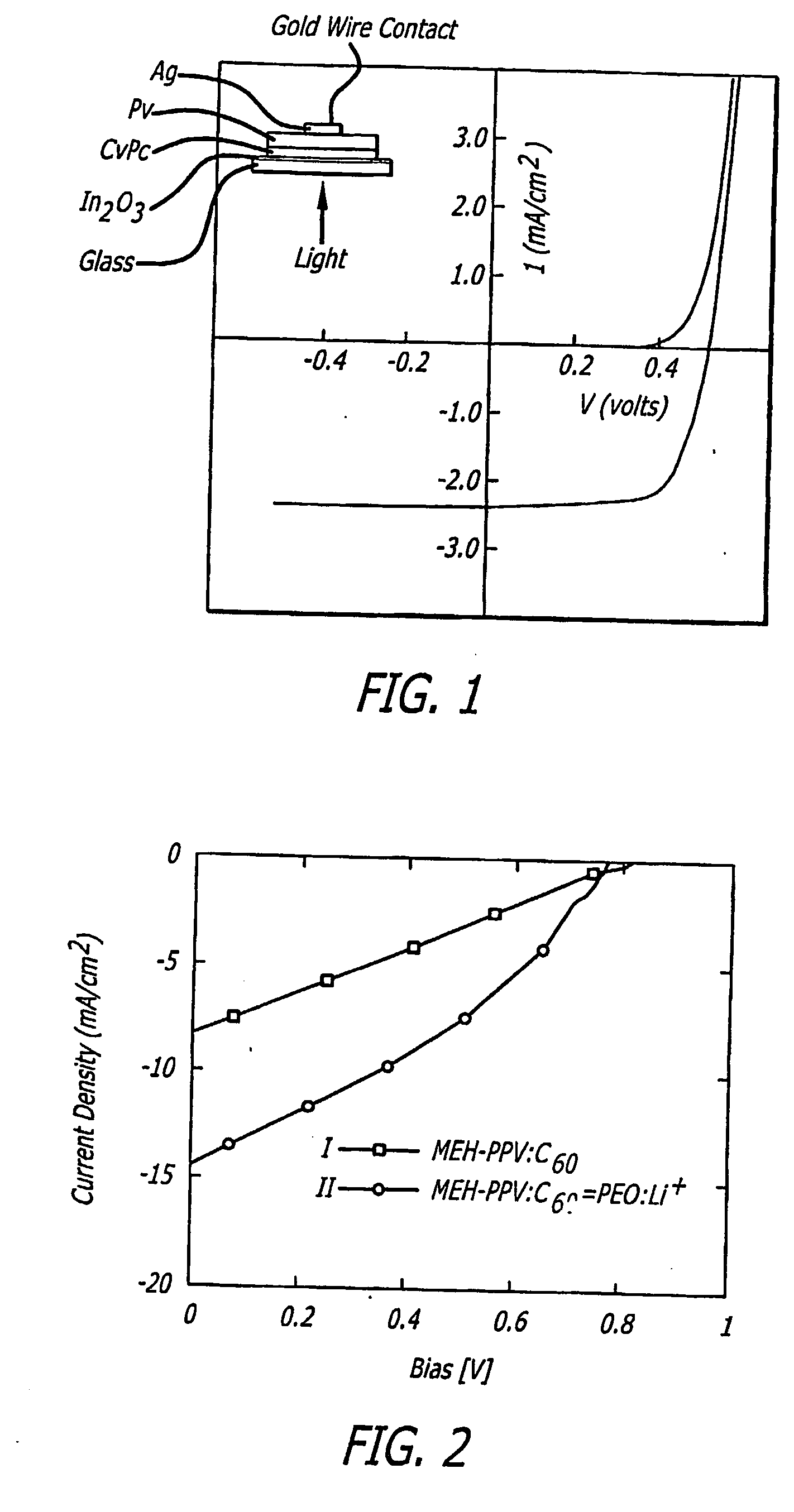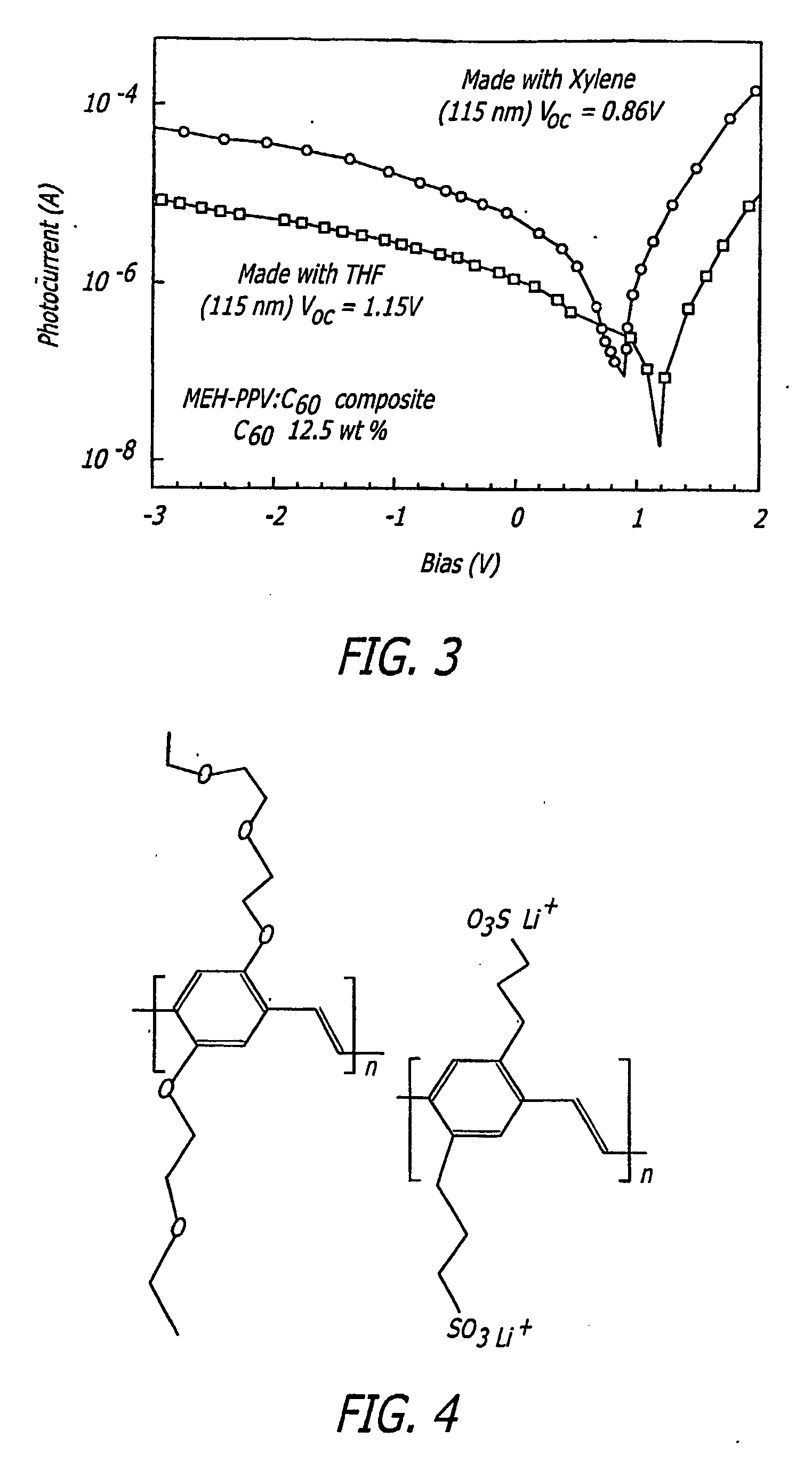High-performance and low-cost plastic solar cells
- Summary
- Abstract
- Description
- Claims
- Application Information
AI Technical Summary
Benefits of technology
Problems solved by technology
Method used
Image
Examples
Embodiment Construction
[0021] An exemplary solar cell in accordance with the present invention is shown generally at 10 in FIG. 7. The solar cell 10 includes an active material in the form of a photovoltaic film 12. The photovoltaic film 12 has a first side 20 and a second side 18. The photovoltaic film 12 is sandwiched between a transparent anode 16 and a cathode 14. Sunlight or light from another source passes through the transparent anode 16 as represented by arrow 22. The structure and use of the solar cell 10 is basically the same as existing solar cells that use organic materials as the photovoltaic film. The principal difference is that the active material provided in accordance with the present invention has a conversion efficiency that is much higher than was previously possible using organic materials. The active material in accordance with the present invention is a mixture of a semi-conducting polymer and an ionic electrolyte. The ionic electrolyte is present in the mixture in an amount rangin...
PUM
| Property | Measurement | Unit |
|---|---|---|
| Percent by mass | aaaaa | aaaaa |
| Percent by mass | aaaaa | aaaaa |
| Percent by mass | aaaaa | aaaaa |
Abstract
Description
Claims
Application Information
 Login to View More
Login to View More - R&D
- Intellectual Property
- Life Sciences
- Materials
- Tech Scout
- Unparalleled Data Quality
- Higher Quality Content
- 60% Fewer Hallucinations
Browse by: Latest US Patents, China's latest patents, Technical Efficacy Thesaurus, Application Domain, Technology Topic, Popular Technical Reports.
© 2025 PatSnap. All rights reserved.Legal|Privacy policy|Modern Slavery Act Transparency Statement|Sitemap|About US| Contact US: help@patsnap.com



